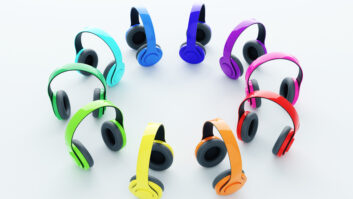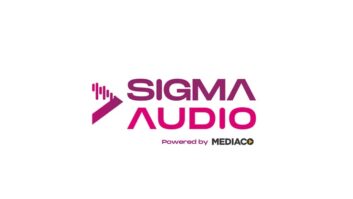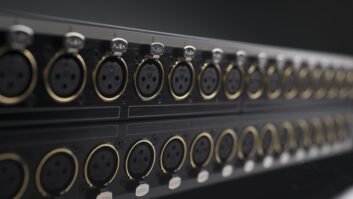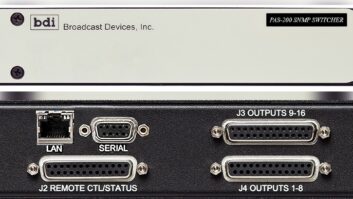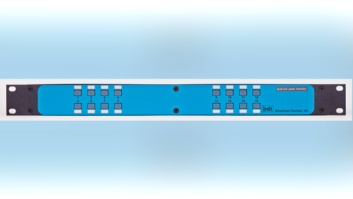CircuitWerkes’ Telephone Interface Has Internal User-Switchable Send Limiters for Clear Feed
Product CapsuleTHUMBS UP:
Excellent value
Send limiters keep audio clear
Aux output for recording or PA
Balanced inputs for line; user-switchable line input level from 0 to -40 dB
Line-level XLR for POTS codec or other use
Headphone jacks for 1/4 and 1/8 inch plugs
THUMBS DOWN:
Battery cover needs Phillips screwdriver
PRICE: $300 MSRP
CONTACT: CircuitWerkes Inc. in Florida at (352) 335-6555 or visit www.circuitwerkes.com
When a reporter rolls up on a breaking story or an engineer gets a last-minute requirement for a remote, the usual option is a phone remote. CircuitWerkes’ MicTel telephone interface helps broadcasters take fair advantage of that option.
Inspired by the venerable Gentner Microtel, the MicTel has a handset connection to a dial-up telephone line. The device replaces the telephone handset, and allows the user to connect a microphone with XLR connector and a line-level input with a 1/4-inch connector so the audio can be transmitted back over the dialed-up line. MicTel adds the capability of sending that audio over a cell phone, which has become a de facto standard for last-minute broadcasts.
We wanted to find out how last-minute “last-minute” could be.
Test groups
Our on-air test of the MicTel was a two-way chat with polka broadcasting legend Bill Flynn, whose Sunday morning program airs on WCDW(FM) Cool 100 in Binghamton, N.Y.
I connected an AT 897 condenser shotgun mic to the XLR mic input, and a pair of Sony Walkman-style headphones to the 1/8-inch headphone jacks. I used a T-Mobile Samsung c225 cell phone with headset adapter and connecting cord (2.5 mm TRS male to 2.5 mm TRS male) to make the connection.
Once connected, Bill and I conversed normally with much better sound quality. Bill’s sidekick, engineer Kevin Bixby, commented that the feed was clear and clean – important considerations when you send a necessarily bandwidth-limited audio feed for an FM station with full audio bandwidth.
One reason the audio sounded clear is the inclusion of internal, user-switchable send limiters on both the MicTel’s program send and aux send circuits. The limiter can control an over-exuberant reporter or personality from overdriving the dial-up or cell phone connection.
In an informal test at CBS Radio News in New York, testers commented on the amount of gain available for the program feed, which can save audio recorded at a low level by boosting it to an appropriate level. Both the microphone XLR and 1/4-inch program output are active, so wraparounds can be done quickly. The balanced line input jack has internal jumpers to adjust the audio line input gain from a 0 to -40 dB level.
Most users won’t take advantage of all the unit’s capabilities. Besides the handset and cell output connections, the MicTel has a +10 dB line level output for an XLR standard line input (POTS codec, etc.). It also has a balanced output for caller (receive) audio from either the handset and cell connection, which can then be connected to a recorder (for recording news actuality), or from a PA feed for a remote (mix-minus return).
The unit has connections for 1/4-inch and 1/8-inch headphone cords, which help keep equipment loads light.
The MicTel has a side tone control, which adjusts the amount of return audio heard in the headsets or in the entire aux audio chain. The aux input can accept inputs from a radio for cuing or a line-level IFB.
With dimensions of 2-1/2 by 5 by 6 inches, the unit will fit comfortably in any bag or backpack. The MicTel is powered by two 9 Volt batteries and an external AC power transformer, with silent auto-switching capability from battery to AC power – perfect for a situation where the power is iffy or you need almost complete mobility, like a remote from the middle of a lake on your cell phone, for instance.
There’s a low-battery LED indicator and the switch is recessed but accessible, which will help with inadvertent operation of the power switch. CircuitWerkes suggests a 36-hour operating time on two 9 Volt alkaline batteries. The battery cover is accessible with a screw that needs a Phillips screwdriver. Some users wouldn’t carry one, so a screw that can be turned by hand would ease battery replacement. We might opt to replace the Phillips screw.
The best feature of the MicTel is its $300 suggested retail price. The unit is suitable for news operations assembling a flyaway kit that can provide nearly 100 percent of news production capability in the field; for operations needing a quick high-quality interface for a cell phone or dial up line; and for operations wanting an emergency backup kept at the transmitter.
Cell Phones for Broadcast: Tips, Tricks and More
In addition to the CircuitWerkes MicTel, JK Audio and Conex make ready-to-go adapters for using the cell phone as a broadcast link.
Visitors to www.jkaudio.com will find data for its RemoteMix Sport, ComPack Daptor One and Daptor Two interfaces along with the CN045 connector cable. Joe Klinger says his company’s products with wireless phone connection capability use an “interface circuit that emulates the microphone and earpiece load of a typical headset,” which essentially “fools the phone into thinking there is a headset present.”
Almost any cell phone with the 2.5 mm three-conductor headset plug will work with the JK equipment. Klinger cautions that his devices are not recommended for use with telephones with the walkie-talkie feature, such as Nextel, because of excessive RF noise.
Some phones like the Samsung c225, Nokia and Sony Ericsson need special adapters to convert their format connector to the 2.5mm format. I found an adapter for my newer-model Samsung SCH c225 at www.accessorygeeks.com , where you can find information on batteries, adapters and external antennas.
If you have an external antenna, you might try that when you are using the cell phone for a broadcast, otherwise the RF could get back into the adapter. (This happened to me in my office, with metal filing cabinets, my standard phone and no external antenna. It caused a lot of hum, which would not pass most station quality control.) An external antenna will help with connection issues, as well.
Visitors to www.conex-electro.com will find data for the company’s FJ-10 and FJ-500 FlipJack, which also connects to the 2.5 mm hands-free adapter jack on most telephones. John Plattner at Conex says the aux input on his equipment is well-suited for a connection to a wireless microphone, and that many users were doing so as a source for crowd noise (ambient sound) or for a person doing commentary from a remote location, like a sideline reporter.
Taking Plattner’s suggestion to another level, one can use a set of wireless headphones or infrared headphones connected to the headphone jack and go completely wireless at the next remote. Talk about crowd interaction.
The convention for the 2.5 mm hands free plug is:
Tip: send (mic level 2 kohm)
Ring: receive (8 ohms usually)
Sleeve: ground
Tell us your own cell phone tips and tricks. Send suggestions or product news to [email protected].</

